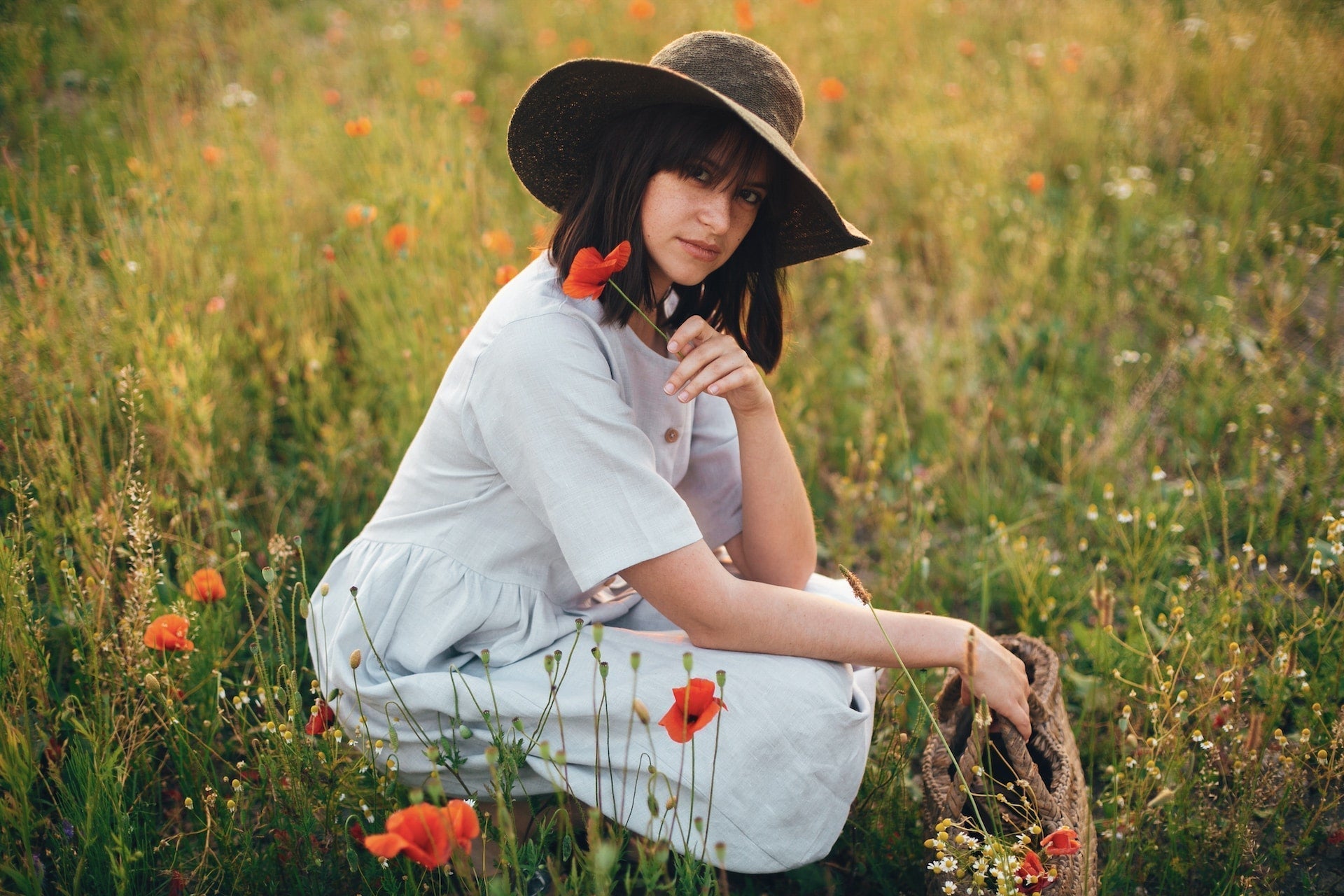In this guide, we'll explore the fascinating history of straw hats, from their ancient origins to their modern-day status as a timeless fashion staple.
Straw hats have been a beloved fashion accessory and practical sun protection solution for thousands of years, dating back to ancient civilizations. Crafted from natural materials including wheat straw, rice straw, palm leaves, and bamboo fibers, these lightweight and breathable headwear pieces offer both style and functionality.
Straw hats protect wearers from harmful UV rays while providing excellent ventilation in warm weather.
The Origins of the Straw Hat

Ancient Egypt and Greece
The history of straw hats begins in ancient Egypt, where the oldest known examples date back thousands of years. Egyptian workers and farmers wore woven straw headwear as essential sun protection while laboring under the intense desert sun.
These early straw hat designs prioritized practicality and heat relief.
The ancient Greeks contributed significantly to straw hat development with the "petasos", a wide-brimmed hat worn by travelers, merchants, and messengers. Both men and women wore this versatile broad-brimmed style for protection during long journeys.
According to the Metropolitan Museum of Art, the petasos became an iconic symbol in Greek art and culture.
Medieval Europe and Social Status
During the Middle Ages, straw hats gained widespread popularity throughout Europe. Agricultural workers and peasants relied on these affordable, durable hats for sun protection during long hours of fieldwork.
However, straw hats also became powerful indicators of social class and economic status.
Higher-quality straw hat materials and superior craftsmanship signaled wealth and elevated social standing. The finest woven straw hats were reserved for nobility and wealthy merchants, while coarser varieties served working-class populations.
The Evolution of the Straw Hat

18th Century: High Fashion Emerges
The 18th century marked a transformative period when straw hats transitioned from practical necessity to fashionable accessory among European aristocracy. Upper-class women adorned their straw hats with elaborate decorations including silk ribbons, exotic feathers, artificial flowers, and delicate lace trim.
Straw bonnets became essential summer fashion items, offering both UV protection for delicate complexions and opportunities for self-expression through decorative embellishments.
19th Century: The Panama Hat Phenomenon
The 19th century witnessed straw hats becoming mainstream accessories in America and worldwide. Both men and women incorporated straw hats into formal attire, pairing them with tailored suits and elegant dresses for social occasions.
The legendary Panama hat rose to international fame during the 1800s, despite a common misconception about its origins. According to the Smithsonian Institution, Panama hats are actually handwoven in Ecuador from toquilla palm fibers (Carludovica palmata), not in Panama.
These hats gained their misleading name when they were shipped through the Panama Canal and worn by canal workers, creating lasting confusion about their true birthplace.
20th Century: Diverse Styles and Cultural Icons
Straw hat popularity continued flourishing throughout the 20th century, with styles diversifying to suit various activities and fashion trends. Straw hats became summer essentials for beach outings, garden parties, outdoor sports, and casual leisure activities.
The straw fedora, characterized by its distinctive creased crown and medium brim, emerged as a cultural phenomenon in the 1920s. This sophisticated style transcended gender boundaries and became associated with jazz musicians, film noir detectives, and prohibition-era culture.
The Fashion Institute of Technology documents how Hollywood stars popularized straw fedoras in classic films.
Modern Straw Hats: Contemporary Style and Sustainability

Today's Straw Hat Culture
Contemporary straw hats maintain their position as beloved warm-weather accessories and year-round fashion statements.
People of all genders embrace straw hat styles for multiple purposes:
- Beach and resort wear: Wide-brimmed sun hats and floppy beach hats
- Gardening and outdoor activities: Practical gardener hats with neck protection
- Festival and concert fashion: Trendy boater hats and decorated styles
- Professional styling: Sleek Panama hats and minimalist designs
- Musical heritage: Country, folk, and Americana performers
Sustainable Fashion Choice
Modern consumers increasingly value straw hats as eco-friendly alternatives to synthetic headwear. Natural straw materials are biodegradable, renewable, and produced with minimal environmental impact compared to petroleum-based fabrics.
Types of Popular Straw Hats
Understanding different straw hat styles helps you choose the perfect option:
- Panama hats: Tightly woven toquilla palm, lightweight and elegant
- Fedora straw hats: Structured crown with center crease, versatile styling
- Boater hats: Flat crown with straight brim, nautical-inspired
- Wide-brim sun hats: Maximum sun protection, resort-ready
- Cowboy straw hats: Western style, durable for outdoor work
- Trilby hats: Shorter brim than fedoras, contemporary urban style
Straw Hat Care and Maintenance
Proper care extends your straw hat's lifespan:
- Store in a cool, dry location away from direct sunlight
- Handle by the brim to prevent crown damage
- Clean with a soft, damp cloth
- Reshape while slightly damp if deformed
- Avoid prolonged water exposure
Conclusion: History of Straw Hats
The rich history of straw hats spans millennia, evolving from ancient Egyptian sun protection to contemporary fashion statements. Straw hats have adorned heads across cultures, social classes, and generations, consistently offering the perfect combination of practical sun protection and timeless style.
Whether you prefer a classic Panama hat, a vintage-inspired fedora, a wide-brimmed beach hat, or a trendy boater style, straw hats remain versatile accessories for modern wardrobes. Their enduring popularity reflects humanity's appreciation for sustainable, functional, and beautiful craftsmanship.
Today's straw hat wearers continue a tradition thousands of years old, connecting us to ancient civilizations while expressing contemporary personal style.
The straw hat's journey from ancient necessity to modern chic proves that great design truly stands the test of time.
FAQs About History of Straw Hats
What is the oldest type of straw hat?
The oldest known straw hats date back to ancient Egypt, where they were worn for sun protection during agricultural work and daily activities. Ancient Greek petasos hats from similar periods also represent some of the earliest documented straw hat designs.
Are Panama hats really from Panama?
No, Panama hats are actually made in Ecuador from toquilla palm fibers. They gained the name "Panama hat" because they were shipped through the Panama Canal and became popular when canal workers wore them, creating widespread confusion about their true origin.
What materials are straw hats made from?
Straw hats are crafted from various natural materials including wheat straw, rice straw, palm leaves (especially toquilla palm), raffia, bamboo, seagrass, and other woven plant fibers. Each material offers different qualities in terms of flexibility, durability, and appearance.
How do you clean and maintain a straw hat?
Clean straw hats gently using a soft, slightly damp cloth to wipe away dust and dirt. Store them in a cool, dry place away from direct sunlight, handle by the brim to maintain shape, and avoid getting them wet. For stubborn stains, use a mild soap solution sparingly.
Why did straw hats become so popular in summer fashion?
Straw hats became summer fashion staples because they provide excellent sun protection while remaining lightweight and breathable. The natural straw materials allow air circulation, keeping heads cool in hot weather, making them both practical and stylish warm-weather accessories.
Looking for premium designer straw hats?
Explore Eric Javits luxury fedora hats, visors, and wide-brim styles perfect for any occasion, from beach days to elegant evening events.
























